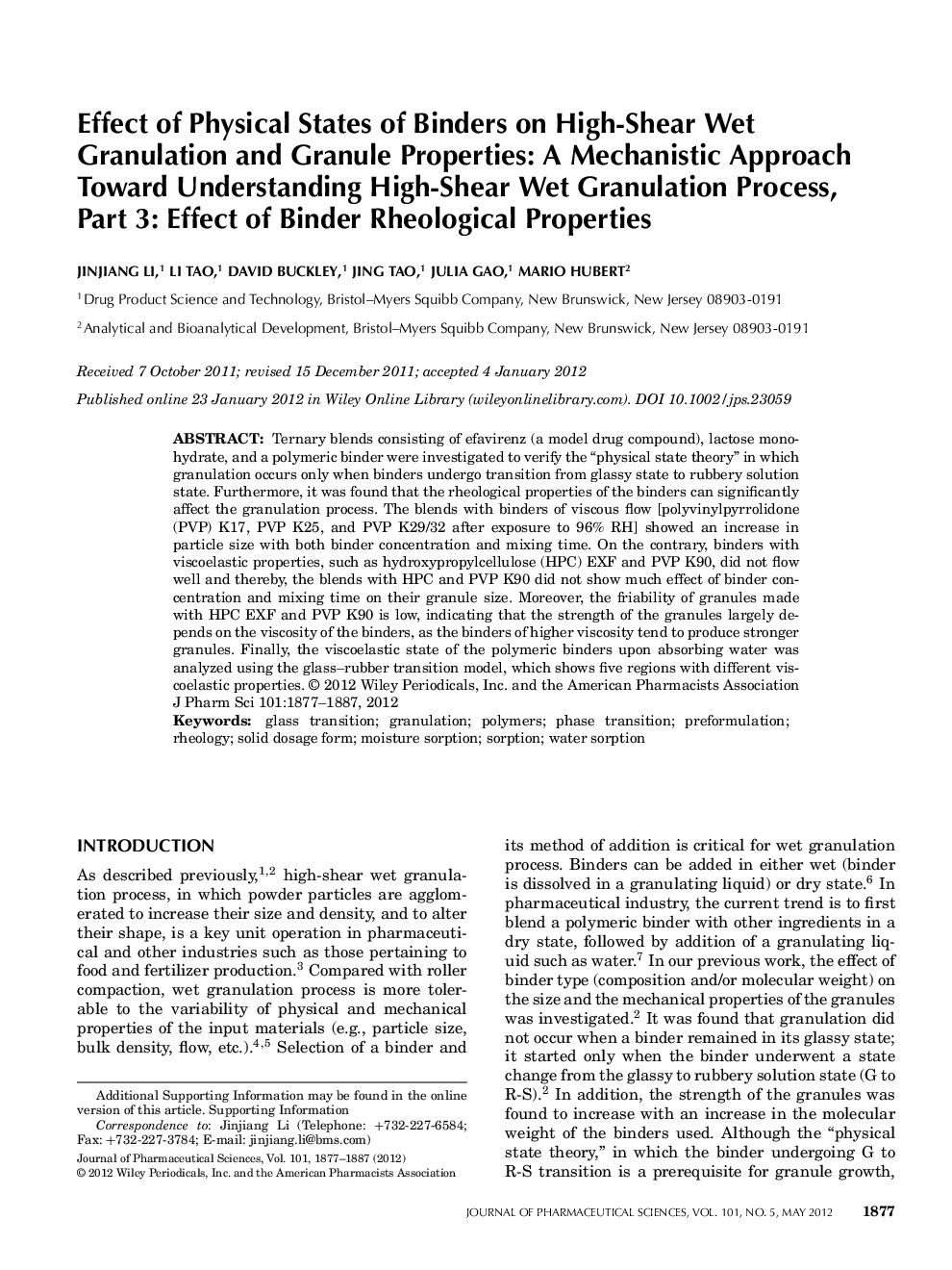| Article ID | Journal | Published Year | Pages | File Type |
|---|---|---|---|---|
| 2485157 | Journal of Pharmaceutical Sciences | 2012 | 11 Pages |
Abstract
Ternary blends consisting of efavirenz (a model drug compound), lactose monohydrate, and a polymeric binder were investigated to verify the “physical state theory” in which granulation occurs only when binders undergo transition from glassy state to rubbery solution state. Furthermore, it was found that the rheological properties of the binders can significantly affect the granulation process. The blends with binders of viscous flow [polyvinylpyrrolidone (PVP) K17, PVP K25, and PVP K29/32 after exposure to 96% RH] showed an increase in particle size with both binder concentration and mixing time. On the contrary, binders with viscoelastic properties, such as hydroxypropylcellulose (HPC) EXF and PVP K90, did not flow well and thereby, the blends with HPC and PVP K90 did not show much effect of binder concentration and mixing time on their granule size. Moreover, the friability of granules made with HPC EXF and PVP K90 is low, indicating that the strength of the granules largely depends on the viscosity of the binders, as the binders of higher viscosity tend to produce stronger granules. Finally, the viscoelastic state of the polymeric binders upon absorbing water was analyzed using the glass-rubber transition model, which shows five regions with different viscoelastic properties. © 2012 Wiley Periodicals, Inc. and the American Pharmacists Association J Pharm Sci 101:1877-1887, 2012
Keywords
Related Topics
Health Sciences
Pharmacology, Toxicology and Pharmaceutical Science
Drug Discovery
Authors
Jinjiang Li, Li Tao, David Buckley, Jing Tao, Julia Gao, Mario Hubert,
